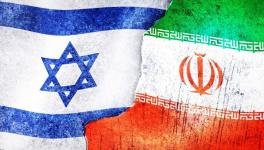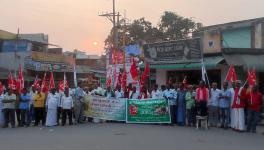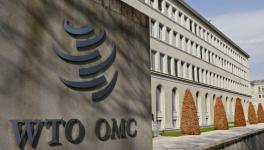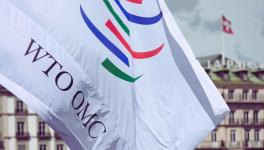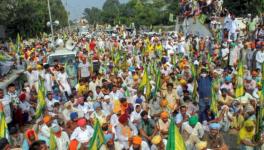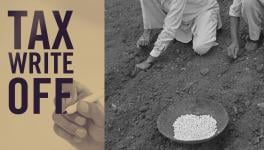Amid Agrarian Crisis, India is Pressured By US to Reduce Farm Subsidies
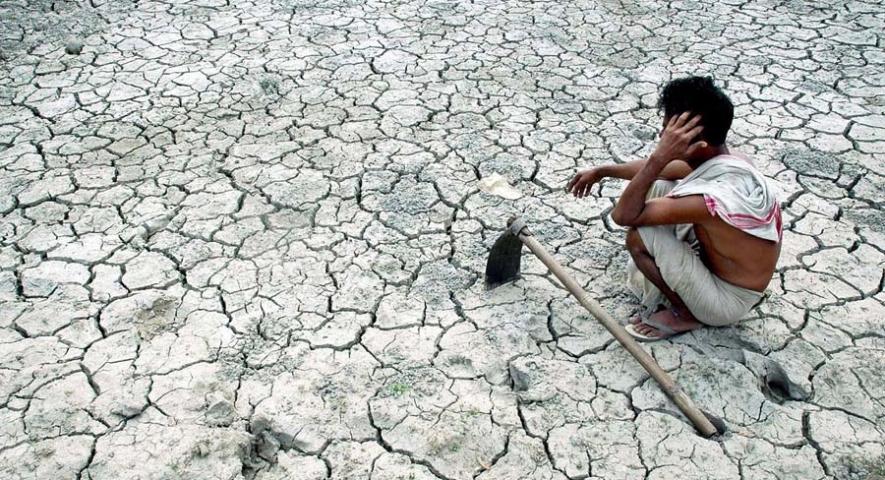
Image Courtesy: IAS Current
In the backdrop of farmers’ agitations across India - a country reeling under an immense agrarian crisis that has pushed over 300,000 farmers to suicide and pauperized many more - the US announced on May 9 that it will be dragging India to the WTO over an accusation that the latter’s agricultural subsidies “exceed” what is permissible. The Indian government has denied these charges, and has accused the US of using wrong methodology while calculating.
This accusation by the US comes at a time when India has been been rocked by protests by various farmers’ organisations, who are complaining that the Indian government has failed to provide the subsidies in form of Minimum Support Prices which the government had promised.
In a joint statement, US Trade Representative Robert Lighthizer and Secretary of Agriculture Sonny Perdue announced that it had filed a counter-notification against India at the WTO on May 4.
In this counter-notification, the first ever filed under the WTO Agreement on Agriculture against measures adopted by another country, the US has alleged that the Indian government has under-reported the Market Price Support (MPS) it has given for rice and wheat in the period 2011/12 - 2013/14, and that the real figure of the MPS given for the two crops in this period exceeds 10%, which is the highest permissible limit under the WTO Agreement on Agriculture.
According to the WTO agreement on agriculture, the Market Price Support (MPS) is the difference between the Minimum Support Price (MSP) given for a commodity and the international price of that commodity in the period 1986-88, Prof. Biswajit Dhar told Newsclick.
According to India’s notification to the WTO, the MPS the government has given for rice in 2013-14 was 120 billion rupees, which amounts to 5.45% of the 1988-86 price of the quantity of rice produced that year for which MPS was provided. For wheat, the MPS was negative, at 49 billion rupees less the international price of that quantity of wheat in 1986-88.
The U.S has contested these figures, and claimed that its own calculations show that India had underreported the MPS it has provided, and real figure for rice was over 1.780 trillion rupees, which is 76.9% of the value of the produce, and that for wheat was 965 billion Indian rupees, or 65.3% of the value of produce.
Complaining that India, by exceeding the 10% threshold, was engaging in trade distorting practices, the US said in the press release by Department of Agriculture that it “expects a robust discussion on how India implements and notifies its policies at the next COA meeting, which is scheduled for June 2018.”
U.S. Wheat Associates (USW) and the National Association of Wheat Growers (NAWG) have welcomed the US government’s move. A press release on the website of USW - whose mission is to “develop, maintain, and expand international markets to enhance wheat’s profitability for U.S. wheat producers - said: “If India does not take corrective actions to bring its programs in line with its WTO commitments, USW and NAWG hope that the United States will coordinate with other affected countries to consider putting forward a dispute settlement case”.
“India’s large price support program has a negative effect on international markets,” said NAWG President Jimmie Musick. “We welcome this signal from our government that it is not going to accept obvious attempts to cheat the system by India and other countries.”
But who really has been cheating?
US is using trickery to squeeze Indian farmers and capture Indian market
Anu Mathai, Economic advisor at the Ministry of Commerce, told Newsclick that the reason for the discrepancy in the figure is “because the [US] has used a different methodology which is incorrect.. We follow a methodology which is in compliance with the WTO rules, whereas they [US] have a different interpretation of the same rules.”
Pointing out that the methodology used by India is explained in the agriculture notification which is published on the WTO website, Anu explained that according to the US, the total quantity of production of a crop has to be considered in the calculation, while India’s position is that only that quantity of the crop the government has procured should be taken into account.
The US, she explained, has arrived at these exaggerated figures by calculating MPS for the total quantity of production, instead of the procured quantity, using rupees as the currency without factoring in the inflation since 1986-88 -- which is the “reference-period against which the support levels have to be compared to see if there is a subsidy component or not.”
Prof. Dhar, who is an expert on WTO affairs, told Newsclick that Indian government, for the purpose of calculating the total value of MPS in dollars, divides the total rupees spent on it by 67 in order to arrive at the figure in dollars, because one US dollar is currently equal to 67 Indian rupees. However, the US, he alleged, is tricking India by dividing the total rupees spent as MPS by 12 or 13, on the grounds that a US dollar was 12 or 13 Indian rupees during the base-period of 1986-88.
Asked if she agrees with this assessment of Prof. Dhar, Anu Madhai said, “I haven’t looked into this, but given that the figures are so hugely inflated, it is quite possible that this could be the reason.”
“India represents a massive market, and we want greater access for U.S. products”
During his announcement Secretary of Agriculture Perdue said: “American farmers are the most productive and competitive in the world, and with free and fair trade, they always do well in the international marketplace.”
However, the fact is that the US government subsidizes American farmers massively, with amounts that in fact exceeded the total value of the produce. In 2001, for instance, $3.9 billion of subsidy was spent by U.S government on production of cotton worth $3 billion. Again in 2005, when the value of the produced cotton was $3.9 billion, the subsidies spent on it was $4.7 billion, P. Sainath has pointed out.
Making the intentions of US behind this move at WTO clear, Perdue said, “India represents a massive market, and we want greater access for U.S. products.” This would invariably mean cutting into the share of Indian farmers. “India” he added, “must be transparent about their practices. For trade to be free and fair, all parties must abide by their WTO commitments.”
US has been the most consistent violator of WTO rules
A preliminary search on the WTO website for "disputes by respondent" indicates that US is the country against which the highest number of complaints have been made by member-countries for violations of WTO rules.
Only two months ago, German Federal Minister for Economic Affairs and Energy complained that America's introduction of tariffs on steel and aluminum is a violation of WTO rules. Early this year, Canada has complained at the WTO, alleging that US is guilty of nearly 200 violations.
It would, however, be a mistake to assume that US has been violating WTO rules only after Trump took the president’s office. Way back in 1997, when the EU challenged the American embargo on Cuba as a violation of trade rules, the US had declared that the WTO "has no competence to proceed", only a few hours after the WTO had appointed a panel of judges to hear the case. "We do not believe anything the WTO says or does can force the U.S. to change its laws," a US spokesperson had said, on the grounds that withdrawing the embargo that was strangling Cuban economy would mean a threat to America’s national security.
In the same year, the Clinton administration, in violation of both NAFTA and WTO agreements, “pressured Mexico into an agreement that would end the shipment of low-price tomatoes to the United States”, in order to defend the interests of tomato growers in Florida. Noam Chomsky, in of his widely read lectures, had said: “The Administration explained the decision forthrightly: Mexican tomatoes are cheaper and consumers here prefer them. The free market is working, but with the wrong outcome. Or perhaps tomatoes too are a threat to national security.”
Get the latest reports & analysis with people's perspective on Protests, movements & deep analytical videos, discussions of the current affairs in your Telegram app. Subscribe to NewsClick's Telegram channel & get Real-Time updates on stories, as they get published on our website.









